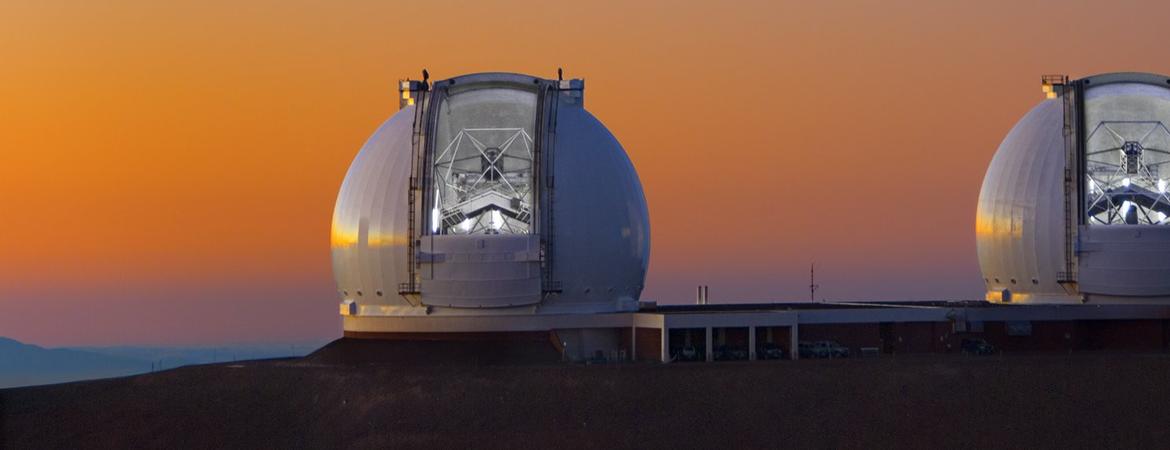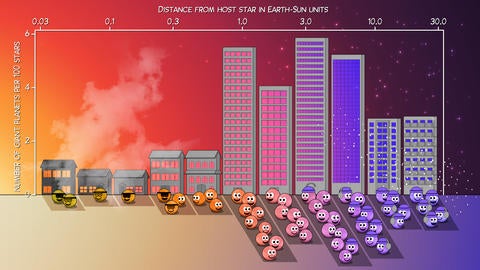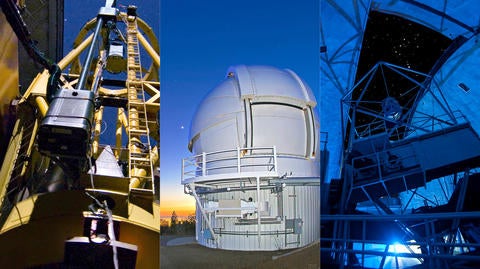
Astronomers have long wondered whether the configuration of planets in our solar system is common elsewhere in the universe. New results from the longest-running survey of exoplanets helps answer this question.
Small, rocky planets in our solar system, like Earth, are found closer to the sun, while giant planets like Jupiter and Saturn sit farther away. The California Legacy Survey looked at the brightest stars in the northern hemisphere for 30 years to determine whether other solar systems are organized this way too.
The survey results are being published in two Astrophysical Journal Supplement articles. They found that the overwhelming majority of giant exoplanets fall between 1 and 10 astronomical units or AU from their host stars.
An AU is roughly 93 million miles, the distance between Earth and the sun. Jupiter is roughly 5 AU from the sun, and Saturn is about 10.
“This tells us that yes, solar systems like ours are fairly normal,” said UC Riverside astrophysicist Stephen Kane. “It also gives us a lot of information about how and where giant planets are able to form.”
One popular method of searching for exoplanets involves monitoring stars for “wobble,” in which a star moves toward and away from Earth. The wobble is likely caused by the gravitational pull a nearby planet exerts on it.
This method is biased toward planets close to their stars, since these are likely to have more wobble.
It was necessary for this survey to be as long as it was, Kane said, because farther-flung planets have less detectable wobbling, and they also tend to take much longer to orbit their stars. For example, Saturn takes 30 years to go around the sun.
“If we observe another star for 30 years, we can start to see if that star might have a Saturn,” Kane said.
Many searches for planets around other stars target a specific area of the sky or certain type of star. This project took a much broader approach that worked like a demographic census, in which pollsters study a wide range of people.
“If you only observe a couple of stars, you wonder if your results are normal,” Kane said. “By observing a random sampling of hundreds of stars, we can trust the results are more representative of stars in general.”
Telescopes at the W.M. Keck Observatory in Hawaii and at the Lick Observatory near San Jose, California, observed 719 sun-like stars for the duration of the survey. They found 177 planets, some of which have 20 times the mass of Jupiter.
This project was supported by the University of California, California Institute of Technology, the University of Hawaii, Tennessee State University, NASA, the National Science Foundation, Google, and Ken and Gloria Levy.
Kane has collaborated with the project for 15 years. He is also involved in a similar survey of stars in the southern hemisphere with the MINERVA-Australis observatory at University of Southern Queensland in Australia.
He is hoping to use the results of California’s Legacy Survey to predict what NASA’s TESS satellite might find. That mission is seeking exoplanets that could potentially support life by observing transits — events that periodically block part of the light from their host stars.
“This survey taught us much about our giant planetary neighbors,” Kane said. “We hope new missions will help us find and learn more about Earth-sized planets, too.”





